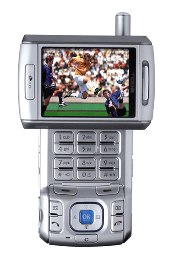Do you watch mobile TV on your cellphone?


MediaFLO is a mobile TV technology backed by Qualcommm that delivers limited channels to compatible devices. It is a signal sent over the airwaves that is different than the wireless data network, however you still need wireless data service for managing your subscription and working with the service. Verizon Wireless also has a competing mobile TV service called V-Cast that also uses this same type of technology. Sprint's TV service is provided over a wireless data network and does not use a dedicated streaming content frequency. These services all require a separate subscription that is added to your wireless phone bill with prices from US$13 to US$30 per month.
Other parts of the world use a more standard DVB-H format for streaming TV content and according to PhoneMag.com a rather large satellite was just launched over the United States that will provide DVB-(S)H signals over the entire country in 2009. Look for devices with DVB-(S)H recievers being announced at CES, such as the Samsung Q1 Ultra Premium. I think this type of service works well for ultra portable devices.
The advantage of these types of services and the technology is that there is really no buffering of video content and streaming is quite fluid. However, there are limited selections on the content that is provided and you need to watch what is on at the time you decide to view the content.
I have no plans to subscribe to any of the current services for a couple of reasons (limited channel selection and subscription fee) and I'll have to take another look at the DVB-(S)H technology next year. When I am on the airplane or in a hotel (and sometimes on my commute) I watch video content. However, that content is either stored locally on my drives or streamed via a WiFi or cellular data connection through my awesome Slingbox Classic connected to my home system. This way I can watch any channel I desire, including my stored DVR content, when I want to without any additional subscription fee. There is an initial charge for the Slingbox and SlingPlayer for mobile devices, but after that it is all part of my data plan.
There can be buffering issues if you are in an area where the wireless signal is limited and I suppose if you really need to watch TV then one of these subscription services may be the answer. I am not that hooked to TV to need to pay another monthly fee though and would be interested in seeing how many people really watch TV on a small phone display. Another great thing about the Slingbox and SlingPlayer software is that I can watch content on my UMPC or MacBook Pro rather than on a phone's small display.
I would be interested in hearing what people think of the mobile TV solutions here in the U.S. and throughout the world. Is it worth the monthly fee? Do you think we should interact a bit more with people when out and about, rather than staring at our phone and watching more TV than we already do?